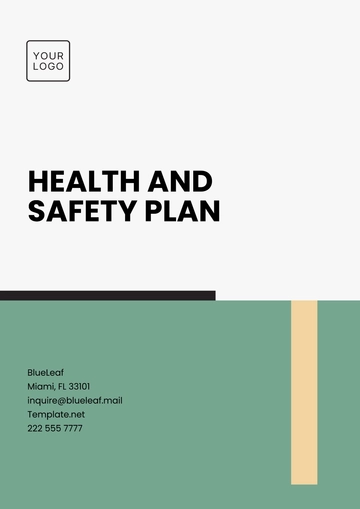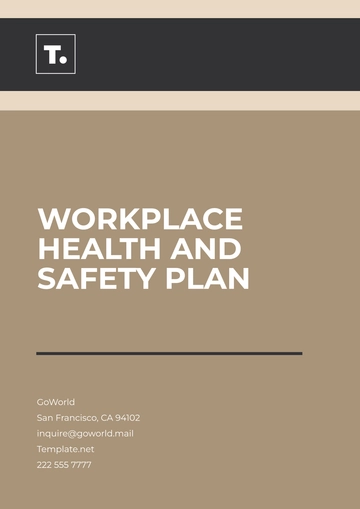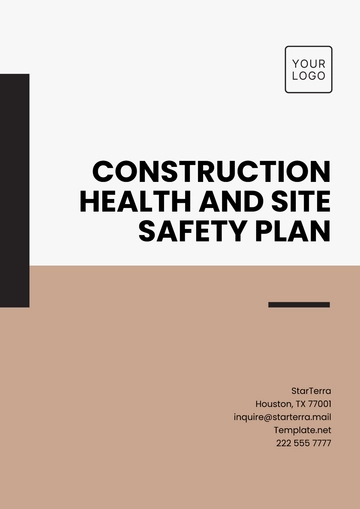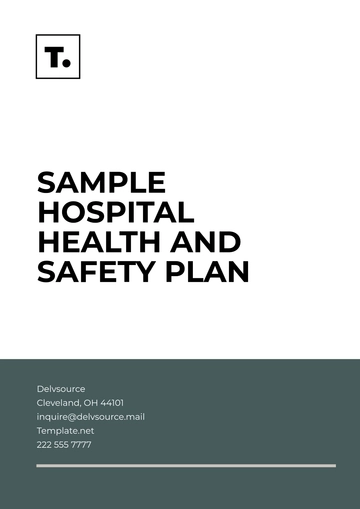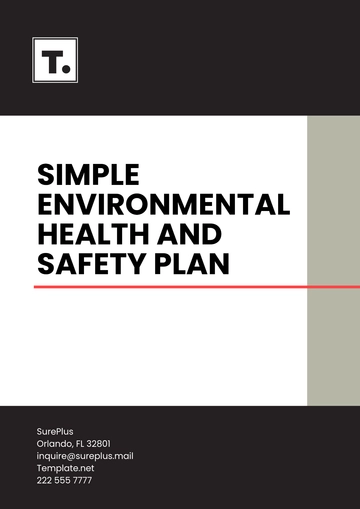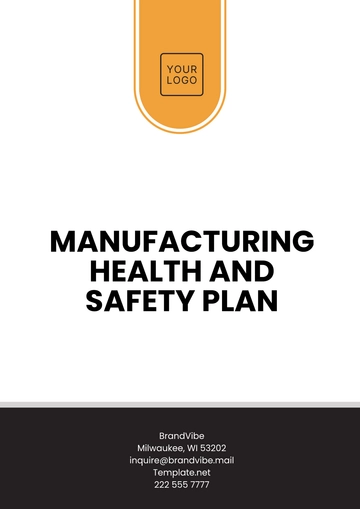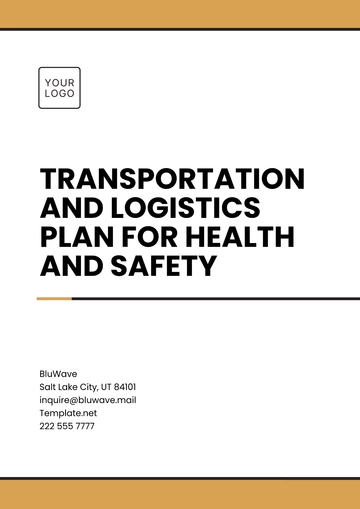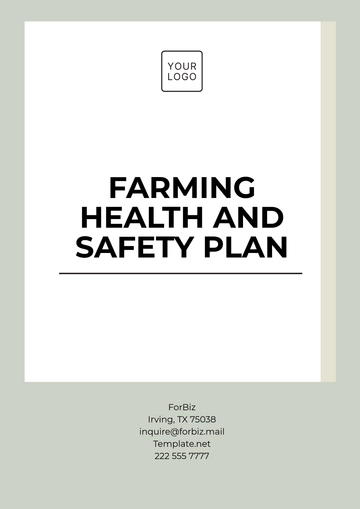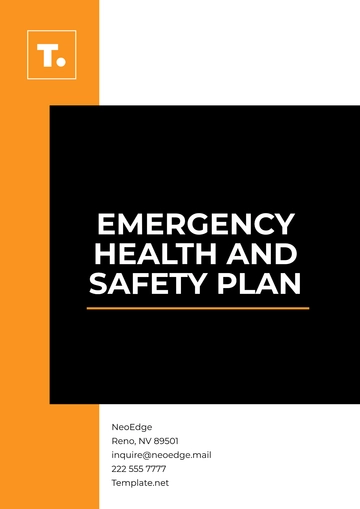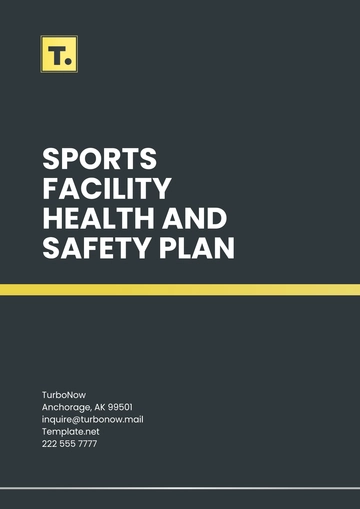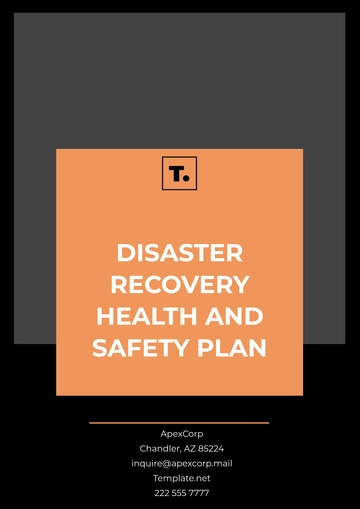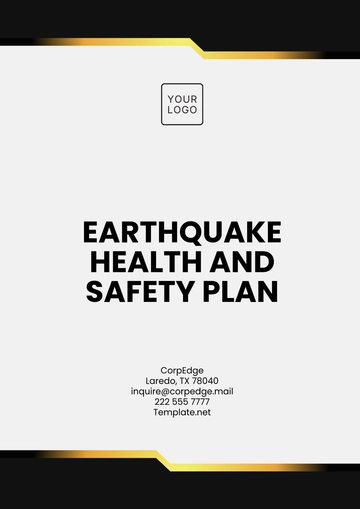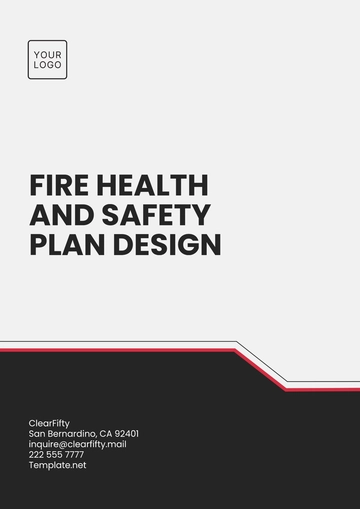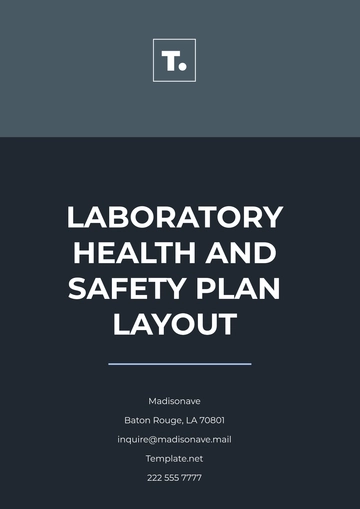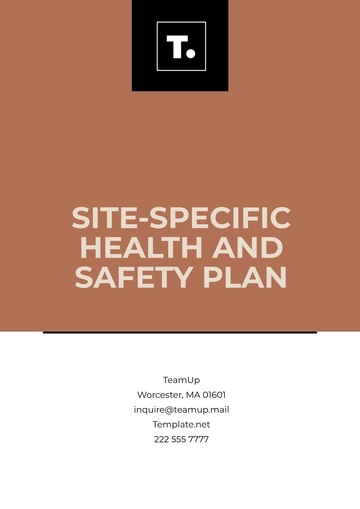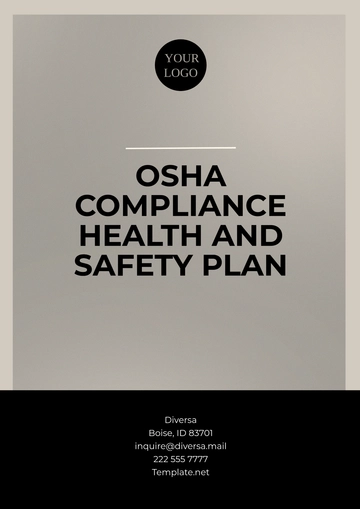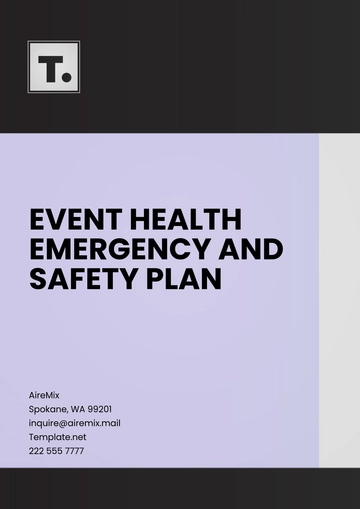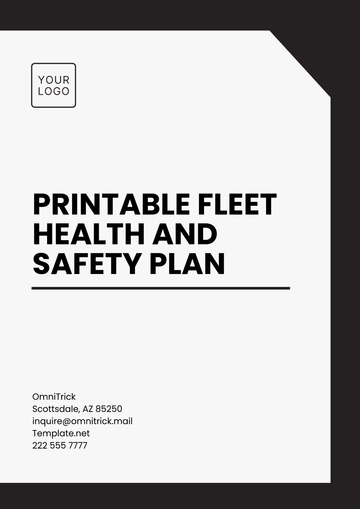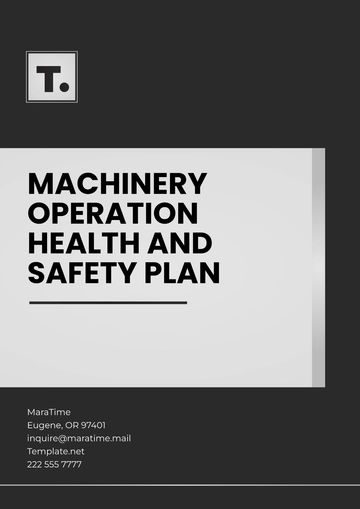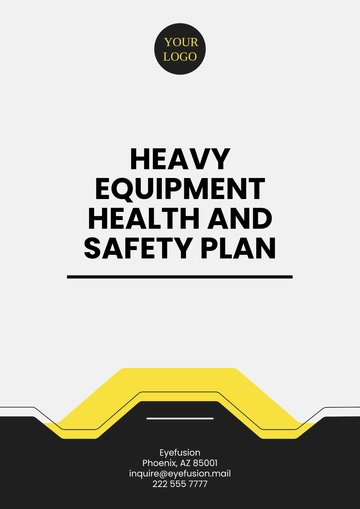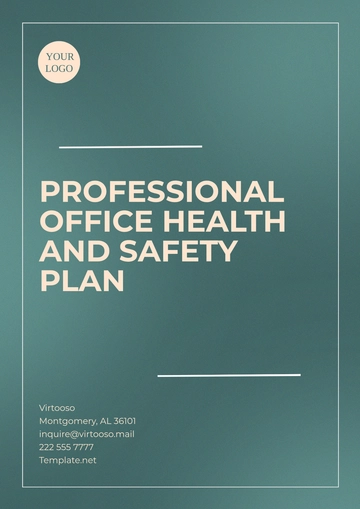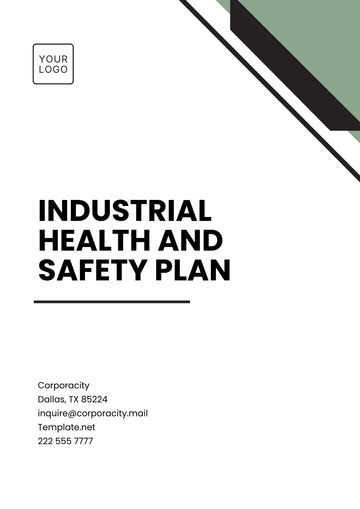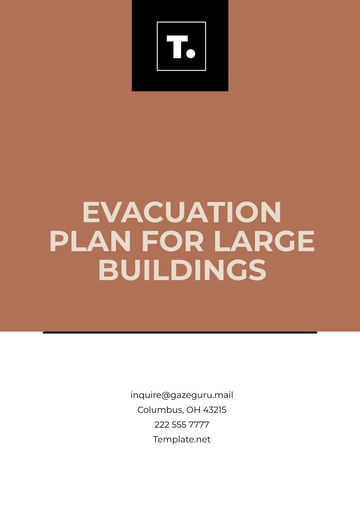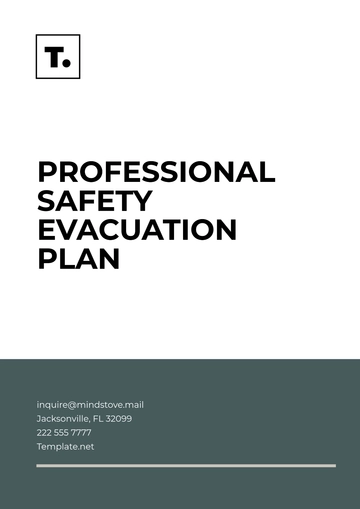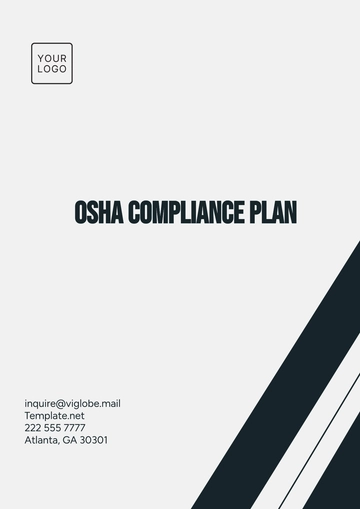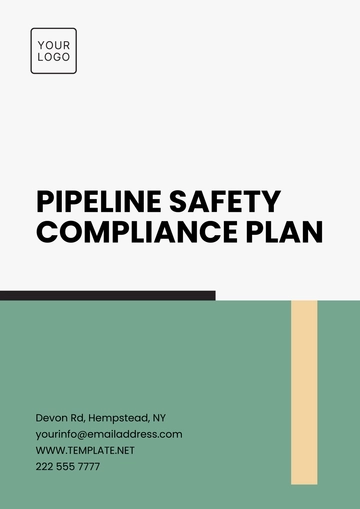Free Offshore Oil Rig Safety Plan
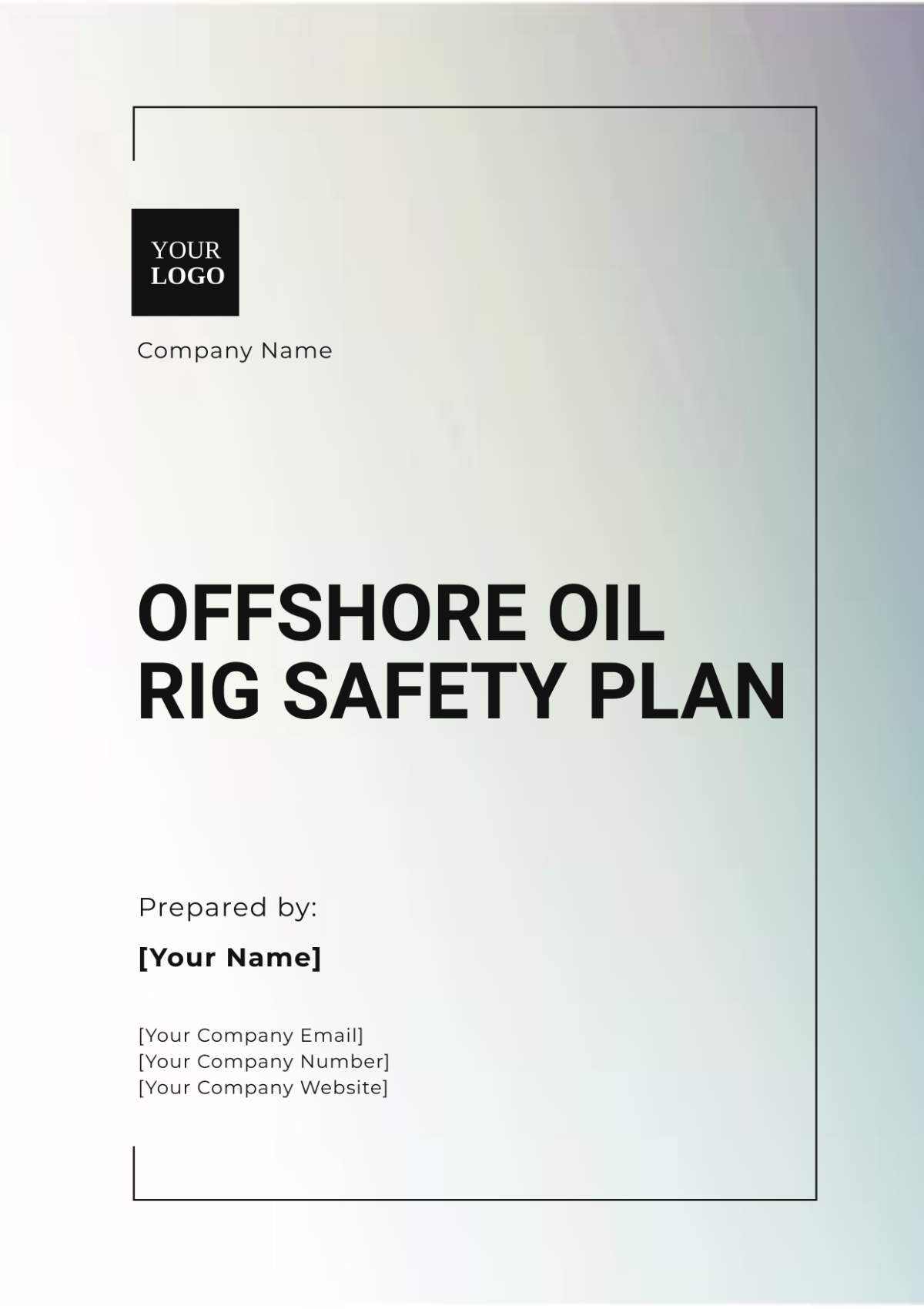
Prepared By: [Your Name]
Company: [Your Company Name]
1. Introduction
The Offshore Oil Rig Safety Plan is a comprehensive document designed to ensure the safety and health of all personnel working on the offshore oil rig. This plan outlines protocols, emergency procedures, training requirements, and safety equipment to mitigate risks associated with offshore oil drilling operations.
2. Objectives
To minimize the risk of accidents and injuries on the offshore oil rig.
To comply with local, national, and international safety regulations and standards.
To establish clear procedures for emergency response and evacuation.
To promote a culture of safety among all personnel.
3. Scope
This safety plan applies to all employees, contractors, and visitors on the offshore oil rig. It encompasses various safety aspects, including:
Personal Protective Equipment (PPE)
Hazard identification and risk assessment
Emergency response and evacuation procedures
Safety training and drills
Incident reporting and investigation
4. Safety Responsibilities
Role | Responsibilities |
|---|---|
Management | Responsible for ensuring compliance with safety regulations and standards; providing the necessary resources for safety training and equipment; and conducting regular safety audits and inspections. |
Safety Officer | Oversees the implementation of the safety plan; conducts hazard assessments and risk evaluations; and facilitates safety training sessions. |
Employees | Expected to adhere to safety procedures and guidelines; report unsafe conditions and incidents promptly; and participate in safety training and drills. |
5. Hazard Identification and Risk Assessment
5.1 Identification
Hazard identification involves recognizing potential dangers associated with offshore oil rig operations, such as:
Slips, trips, and falls
Fire and explosion hazards
Chemical exposure
Equipment malfunctions
5.2 Risk Assessment
A thorough risk assessment will be conducted to evaluate the likelihood and severity of identified hazards. This assessment will guide the implementation of control measures to mitigate risks.
6. Personal Protective Equipment (PPE)
All personnel must wear appropriate PPE, which includes:
Hard hats
Safety glasses
Hearing protection
Flame-resistant clothing
Steel-toed boots
Gloves
7. Emergency Response Procedures
7.1 Emergency Evacuation Plan
Alarm Activation: Familiarize all personnel with the alarm system and the procedures for activation.
Evacuation Routes: Mark evacuation routes and assembly points. Ensure they are accessible and unobstructed.
Accountability: Designate personnel to conduct headcounts at assembly points to ensure everyone is accounted for.
Transport: Establish protocols for transportation to safety vessels in the event of an emergency.
7.2 Fire Response Plan
Firefighting Equipment: Ensure the availability and accessibility of firefighting equipment such as extinguishers and hoses.
Fire Drills: Conduct regular fire drills to familiarize personnel with evacuation procedures and firefighting techniques.
Fire Watch: Assign personnel to monitor high-risk areas and report any signs of fire immediately.
8. Training and Drills
8.1 Safety Training
All personnel will undergo mandatory safety training, covering topics such as:
Hazard recognition
Safe work practices
Use of PPE
Emergency response procedures
8.2 Regular Drills
Conduct regular drills for various emergency scenarios, including:
Fire evacuations
Man overboard
Oil spill response
9. Incident Reporting and Investigation
9.1 Reporting Procedures
All incidents, near misses, and unsafe conditions must be reported immediately to the Safety Officer. A standard incident report form will be used to document:
Date and time of the incident
Location
Description of the event
Names of individuals involved
Witnesses
9.2 Investigation Process
The Safety Officer will conduct a thorough investigation of all incidents to identify root causes and prevent recurrence. Findings will be documented, and recommendations for improvement will be made.
10. Conclusion
The Offshore Oil Rig Safety Plan serves as a crucial framework for ensuring the safety and well-being of personnel working in potentially hazardous environments. Continuous improvement, regular training, and strict adherence to safety protocols are essential to maintaining a safe working environment on the offshore oil rig.
- 100% Customizable, free editor
- Access 1 Million+ Templates, photo’s & graphics
- Download or share as a template
- Click and replace photos, graphics, text, backgrounds
- Resize, crop, AI write & more
- Access advanced editor
Ensure maximum safety on your offshore oil rig with the Offshore Oil Rig Safety Plan Template from Template.net. This editable and customizable template is tailored to the specific challenges and regulations of offshore operations. Easily adapt its comprehensive content to meet your site’s unique safety protocols. With a clear structure and detailed guidelines, you can effectively implement safety measures, protecting your crew and maintaining compliance with industry standards.
You may also like
- Finance Plan
- Construction Plan
- Sales Plan
- Development Plan
- Career Plan
- Budget Plan
- HR Plan
- Education Plan
- Transition Plan
- Work Plan
- Training Plan
- Communication Plan
- Operation Plan
- Health And Safety Plan
- Strategy Plan
- Professional Development Plan
- Advertising Plan
- Risk Management Plan
- Restaurant Plan
- School Plan
- Nursing Home Patient Care Plan
- Nursing Care Plan
- Plan Event
- Startup Plan
- Social Media Plan
- Staffing Plan
- Annual Plan
- Content Plan
- Payment Plan
- Implementation Plan
- Hotel Plan
- Workout Plan
- Accounting Plan
- Campaign Plan
- Essay Plan
- 30 60 90 Day Plan
- Research Plan
- Recruitment Plan
- 90 Day Plan
- Quarterly Plan
- Emergency Plan
- 5 Year Plan
- Gym Plan
- Personal Plan
- IT and Software Plan
- Treatment Plan
- Real Estate Plan
- Law Firm Plan
- Healthcare Plan
- Improvement Plan
- Media Plan
- 5 Year Business Plan
- Learning Plan
- Marketing Campaign Plan
- Travel Agency Plan
- Cleaning Services Plan
- Interior Design Plan
- Performance Plan
- PR Plan
- Birth Plan
- Life Plan
- SEO Plan
- Disaster Recovery Plan
- Continuity Plan
- Launch Plan
- Legal Plan
- Behavior Plan
- Performance Improvement Plan
- Salon Plan
- Security Plan
- Security Management Plan
- Employee Development Plan
- Quality Plan
- Service Improvement Plan
- Growth Plan
- Incident Response Plan
- Basketball Plan
- Emergency Action Plan
- Product Launch Plan
- Spa Plan
- Employee Training Plan
- Data Analysis Plan
- Employee Action Plan
- Territory Plan
- Audit Plan
- Classroom Plan
- Activity Plan
- Parenting Plan
- Care Plan
- Project Execution Plan
- Exercise Plan
- Internship Plan
- Software Development Plan
- Continuous Improvement Plan
- Leave Plan
- 90 Day Sales Plan
- Advertising Agency Plan
- Employee Transition Plan
- Smart Action Plan
- Workplace Safety Plan
- Behavior Change Plan
- Contingency Plan
- Continuity of Operations Plan
- Health Plan
- Quality Control Plan
- Self Plan
- Sports Development Plan
- Change Management Plan
- Ecommerce Plan
- Personal Financial Plan
- Process Improvement Plan
- 30-60-90 Day Sales Plan
- Crisis Management Plan
- Engagement Plan
- Execution Plan
- Pandemic Plan
- Quality Assurance Plan
- Service Continuity Plan
- Agile Project Plan
- Fundraising Plan
- Job Transition Plan
- Asset Maintenance Plan
- Maintenance Plan
- Software Test Plan
- Staff Training and Development Plan
- 3 Year Plan
- Brand Activation Plan
- Release Plan
- Resource Plan
- Risk Mitigation Plan
- Teacher Plan
- 30 60 90 Day Plan for New Manager
- Food Safety Plan
- Food Truck Plan
- Hiring Plan
- Quality Management Plan
- Wellness Plan
- Behavior Intervention Plan
- Bonus Plan
- Investment Plan
- Maternity Leave Plan
- Pandemic Response Plan
- Succession Planning
- Coaching Plan
- Configuration Management Plan
- Remote Work Plan
- Self Care Plan
- Teaching Plan
- 100-Day Plan
- HACCP Plan
- Student Plan
- Sustainability Plan
- 30 60 90 Day Plan for Interview
- Access Plan
- Site Specific Safety Plan
